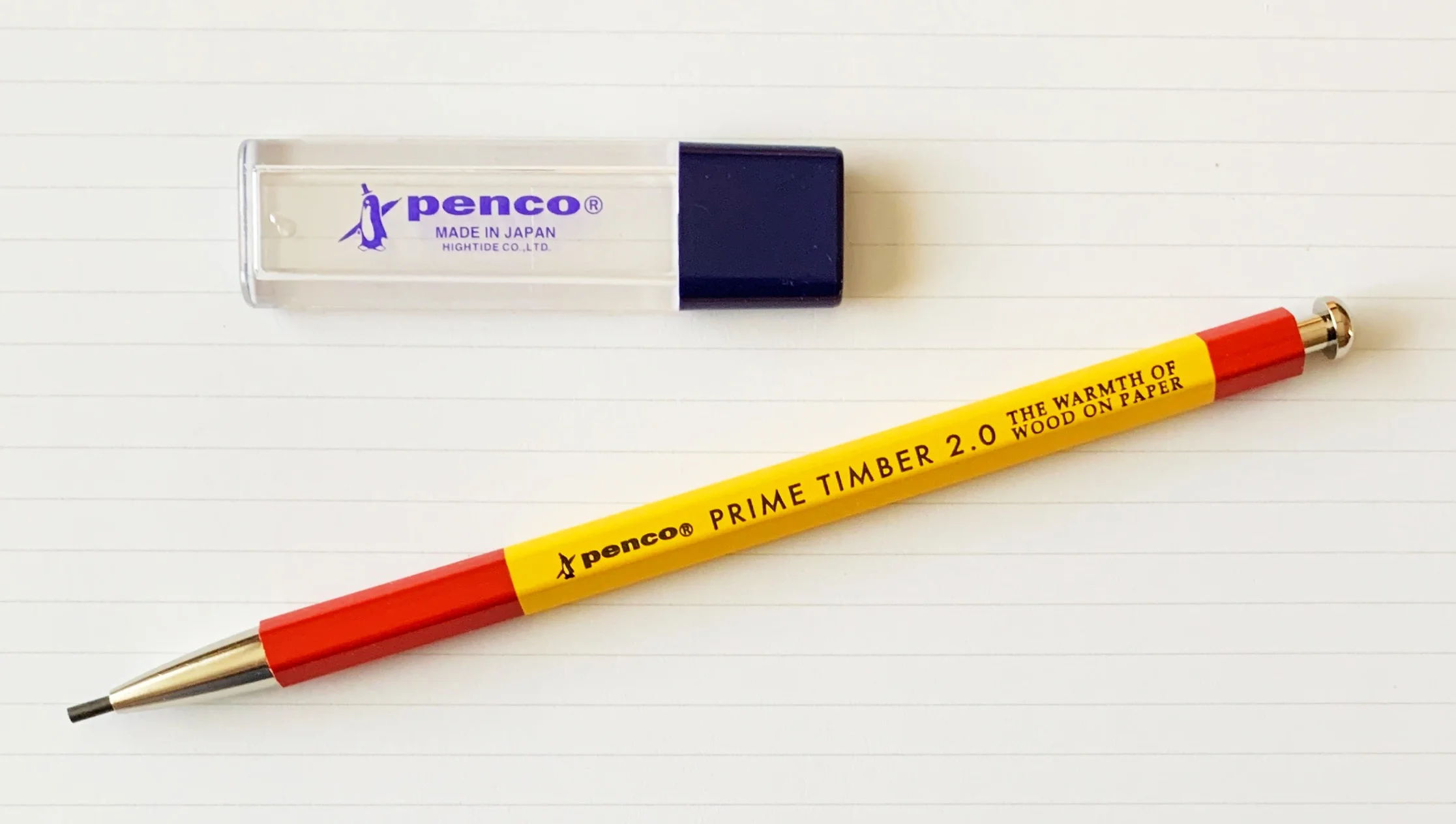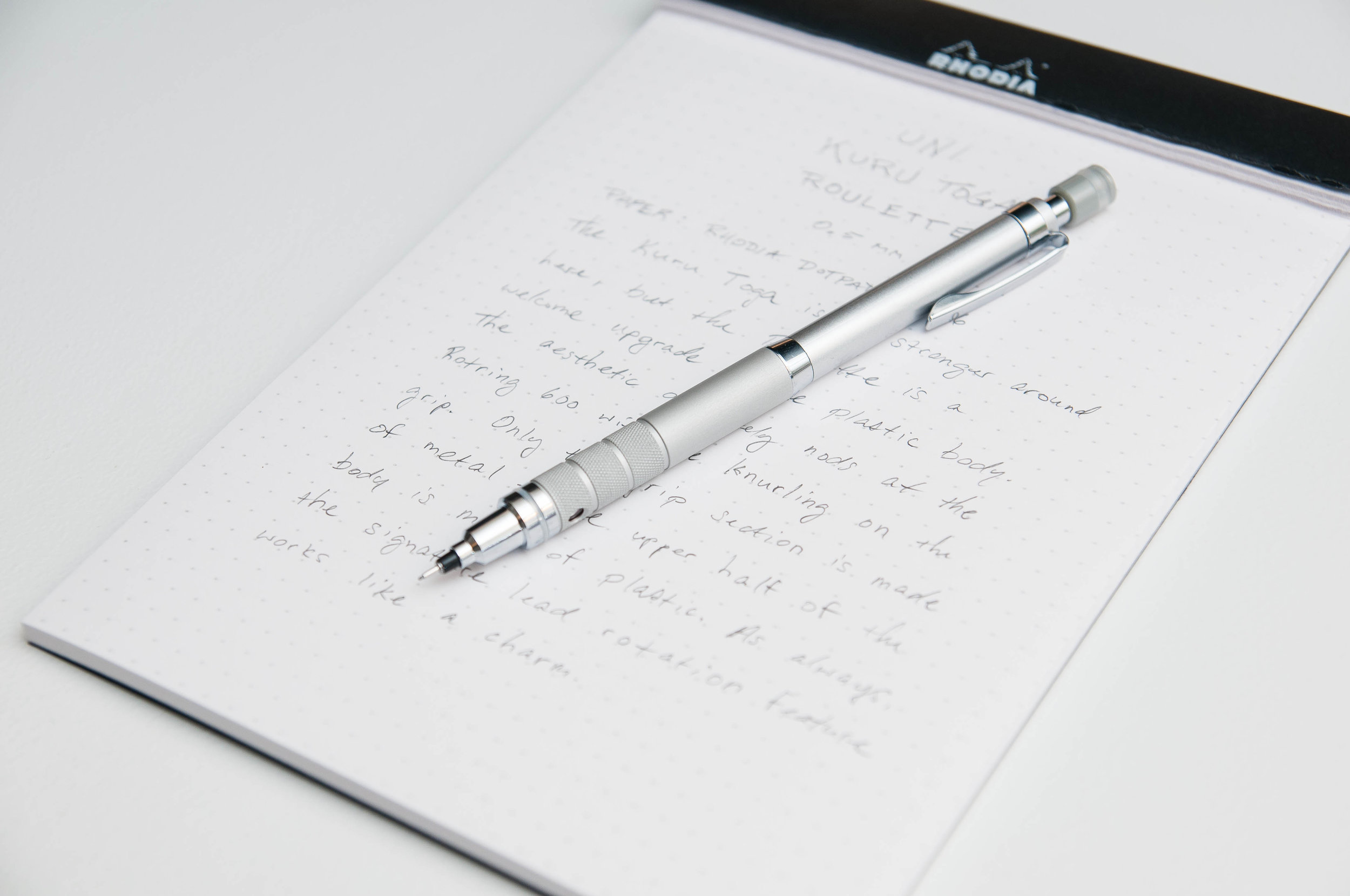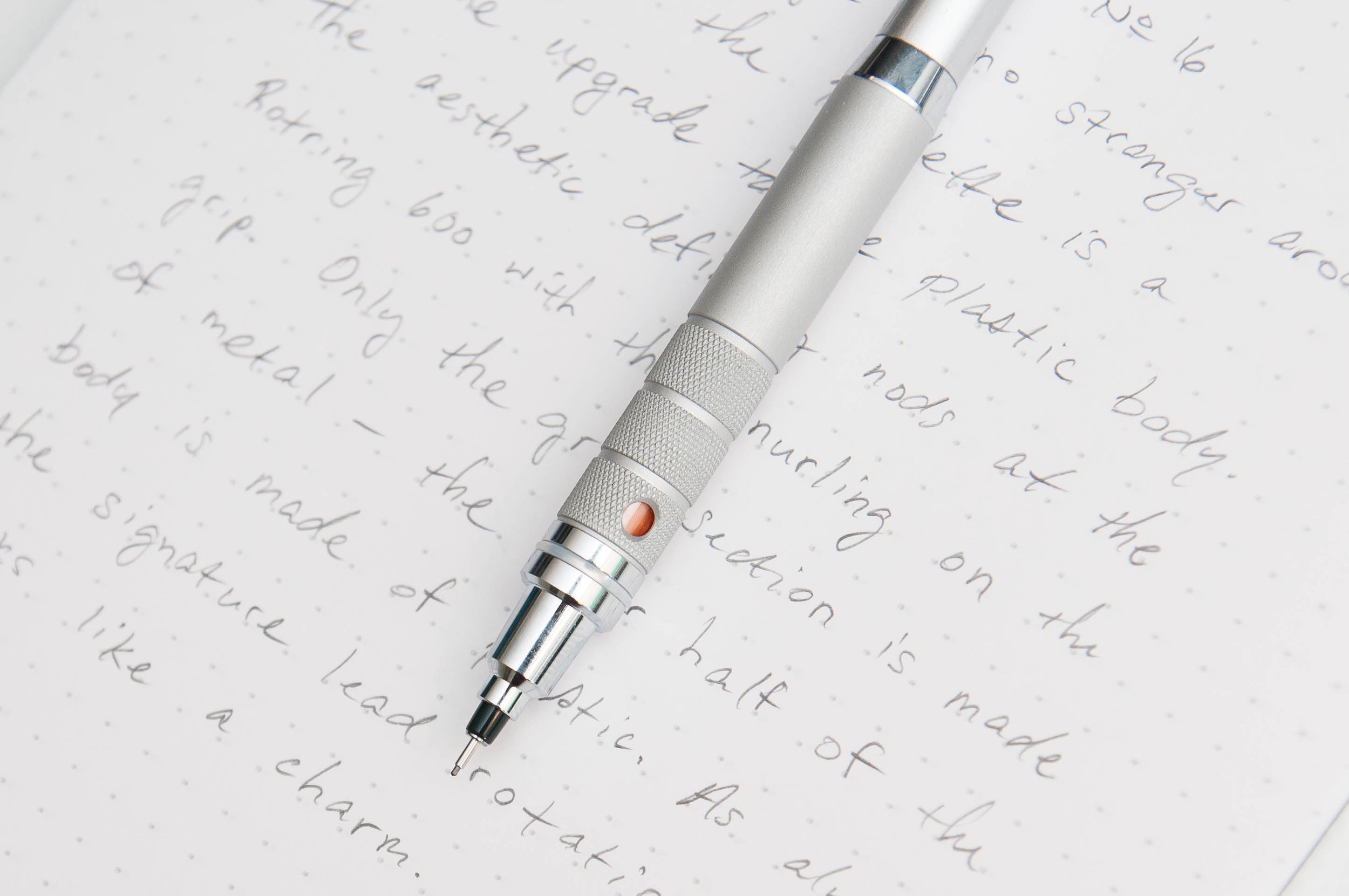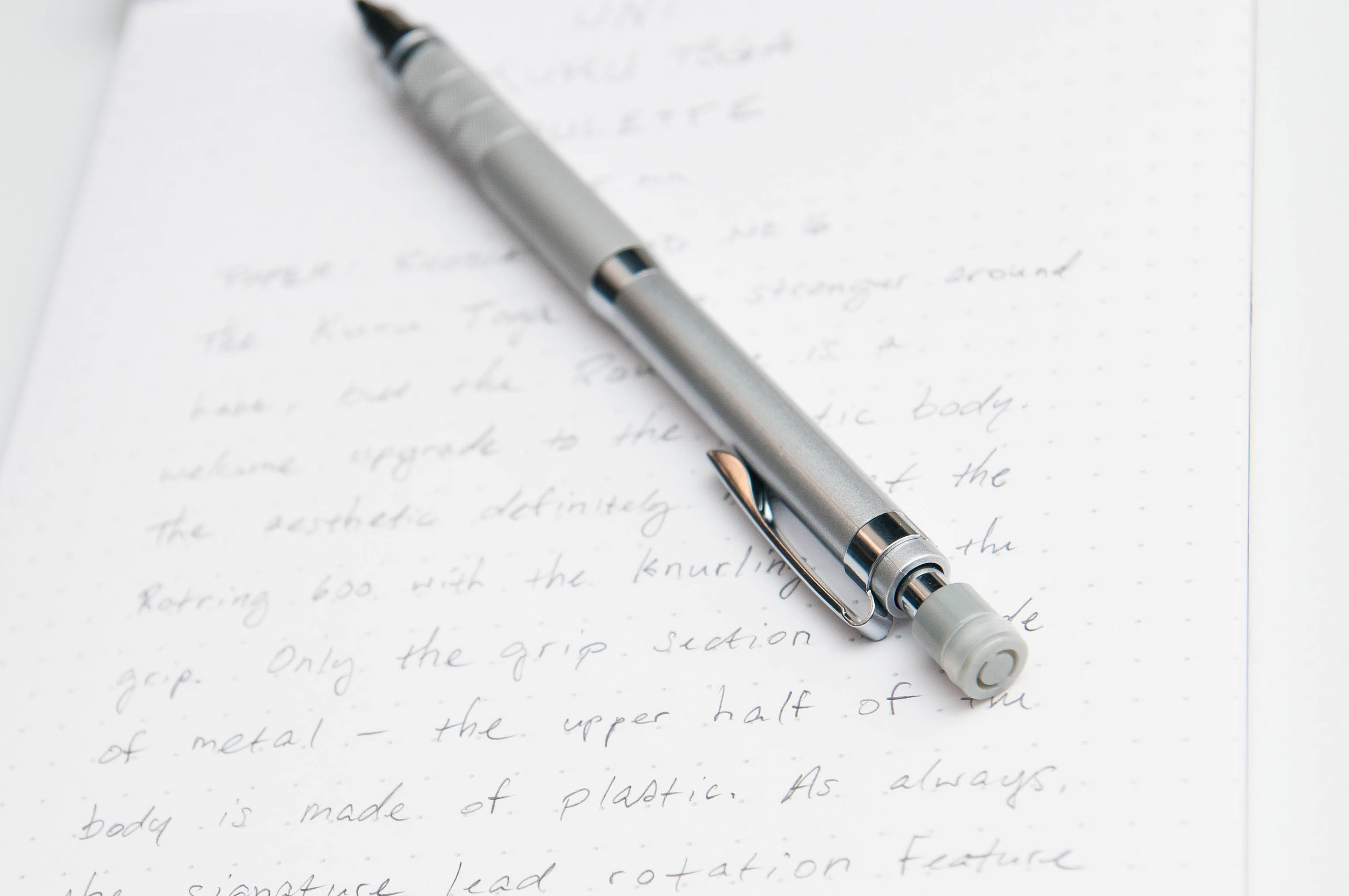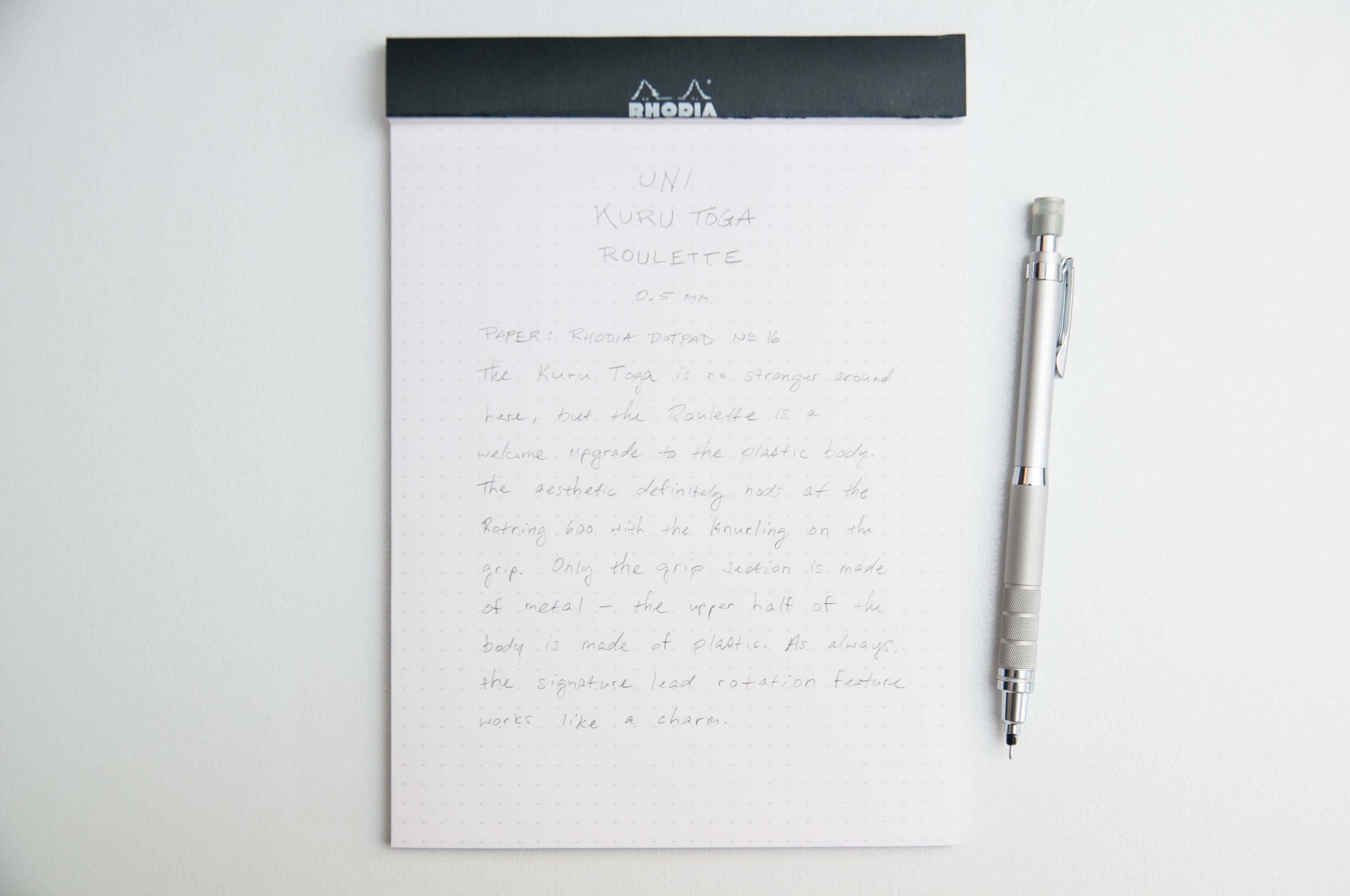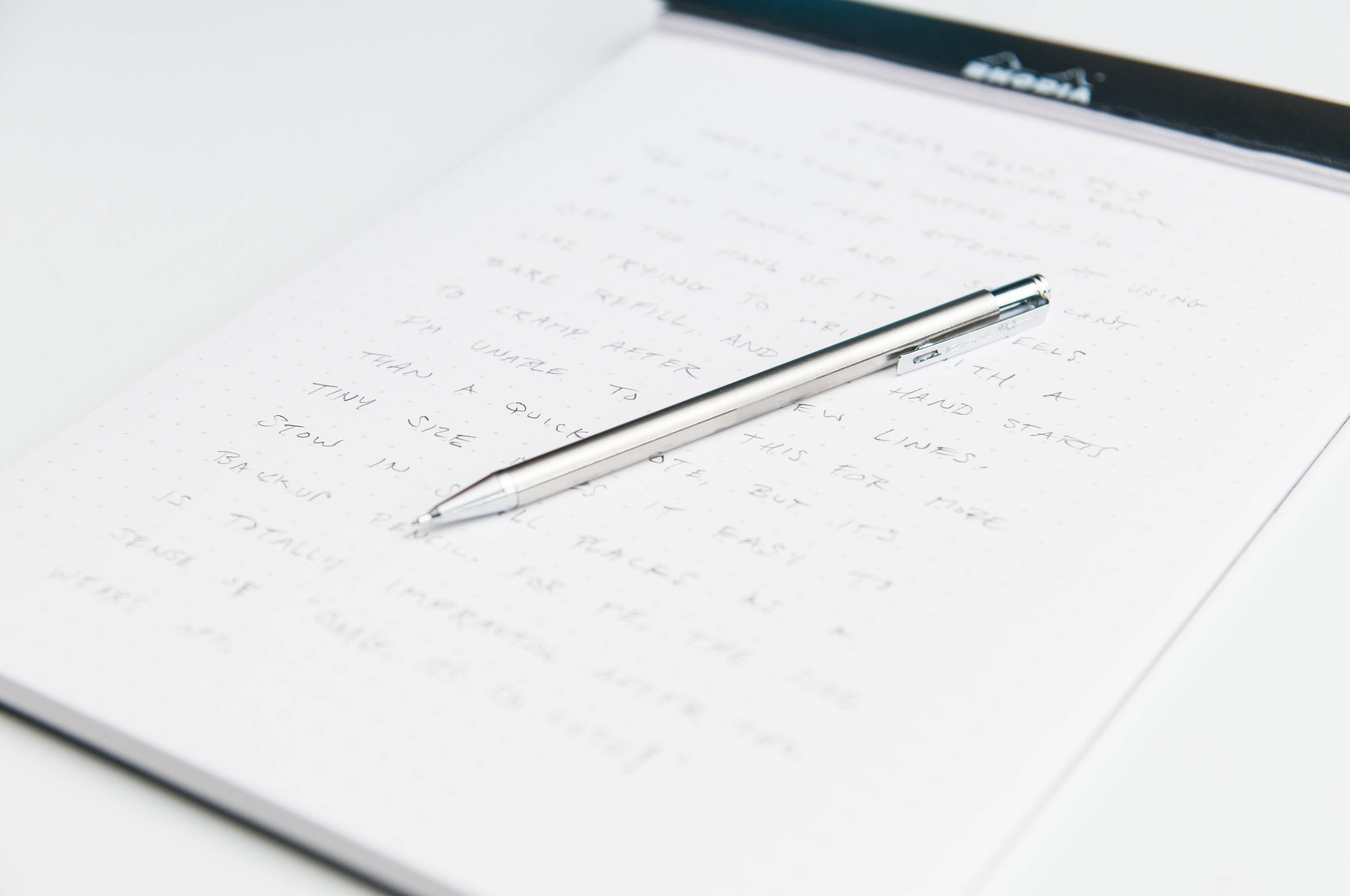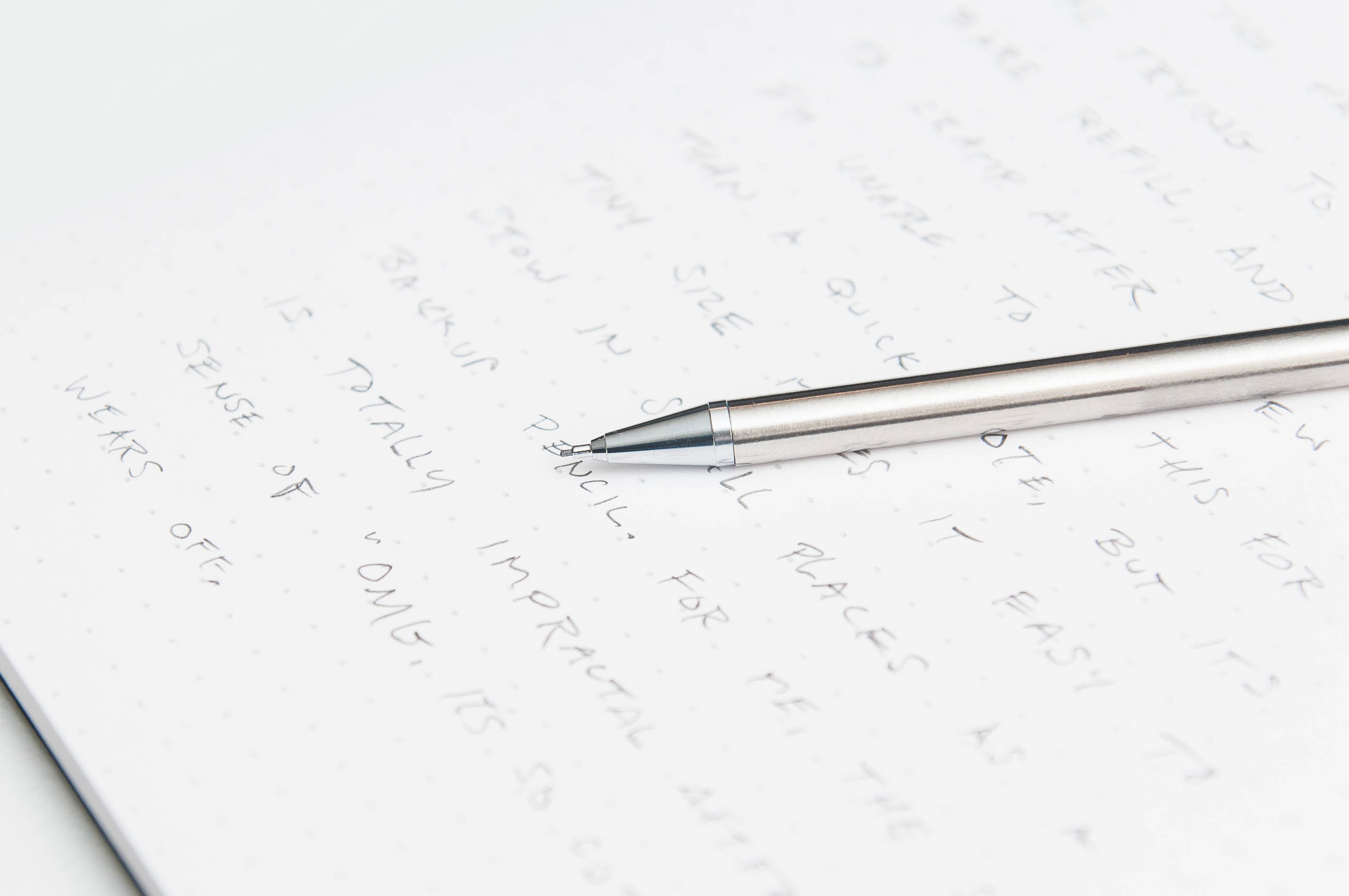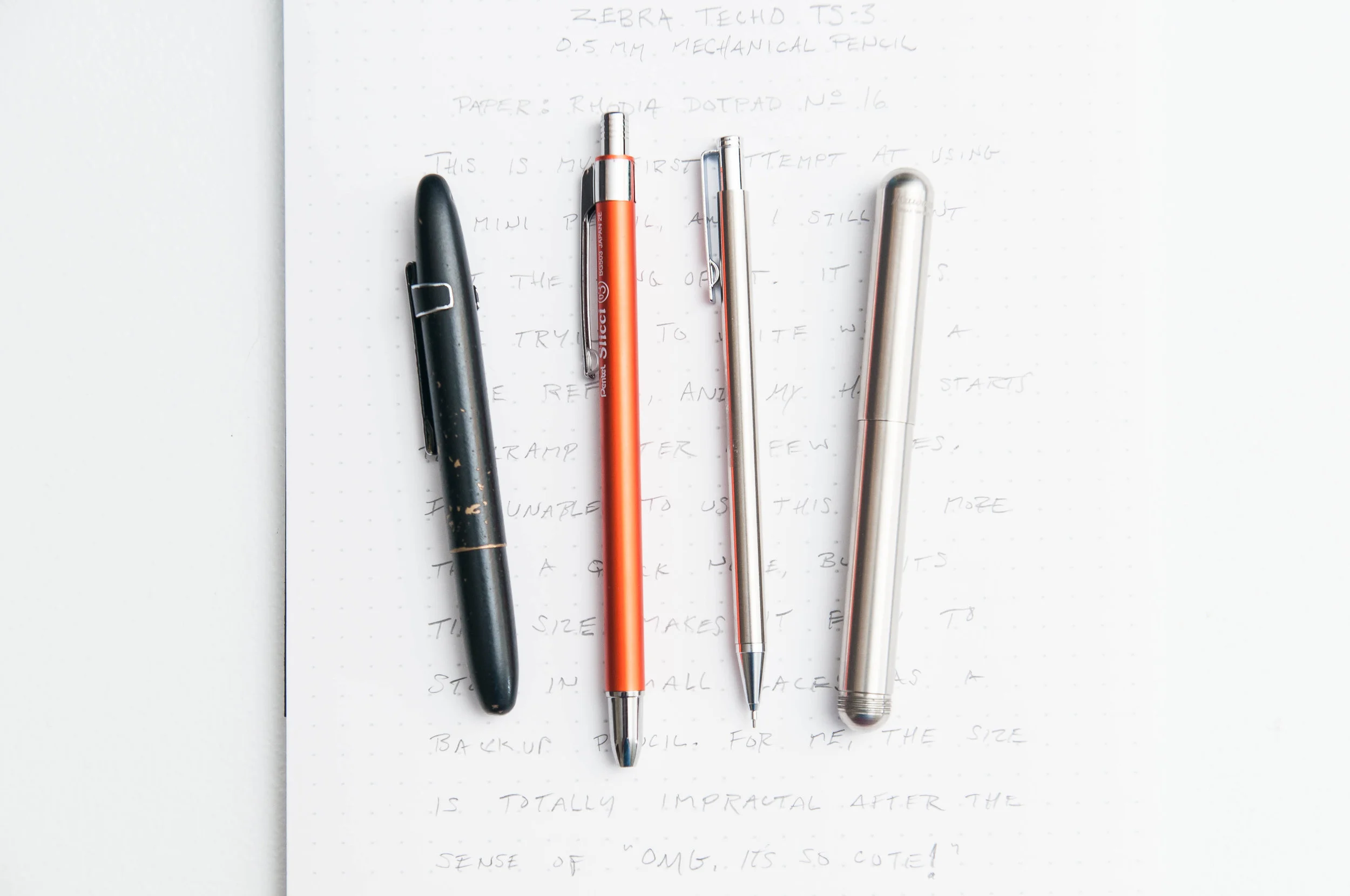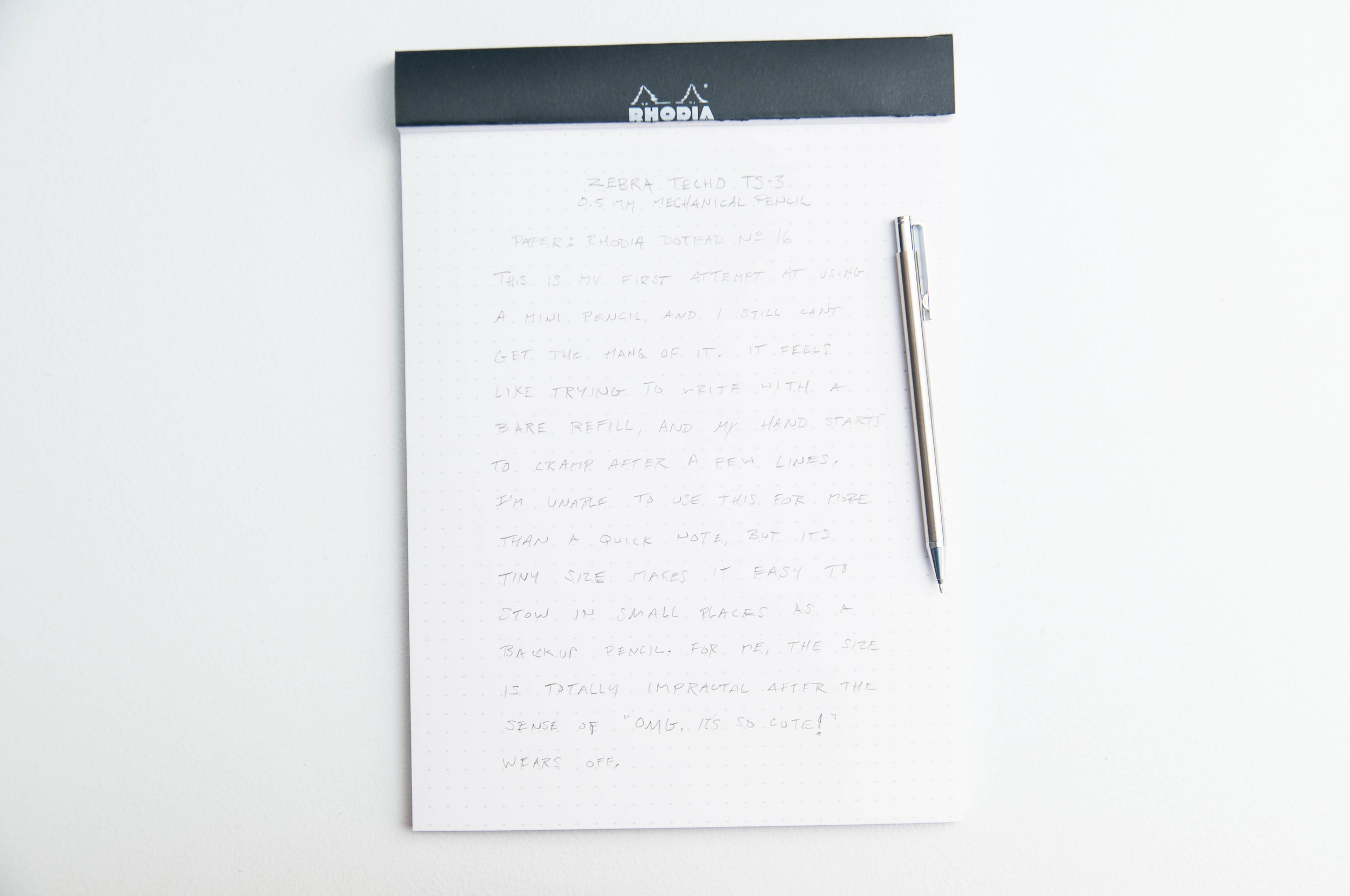I was swayed by the style.
Penco is a brand I had heard of and seen online, but never had the opportunity to purchase one. That changed with a visit to Archer Paper Goods in Atlanta a few months ago, where I bought this Prime Timber Mechanical Pencil.
Penco’s products have a vintage-modern aesthetic that I love. Their lineup contains mostly basic office goods - pens, pencils, notebooks, binder clips, clipboards, etc. - which are all very consistent in their look. If Aaron Draplin founded Poppin I think this is what the result would look like.
Aesthetics aside, the product still has to be good, and the Prime Timber Mechanical Pencil is.
At first glance you might think this was a clutch pencil, especially looking at the elongated barrel and 2.0 mm wide graphite often found in that type of pencil. But no, this is a standard mechanical pencil with a click mechanism. Nothing wrong with that at all, other than being able to more finely control the exposed lead length and not having to press the lead into the page when retracting it with a clutch.
The exterior barrel is incense cedar from the US, which gives you that traditional pencil smell in a mechanical pencil setup. It feels great, too, like a standard full length hex barrel pencil, but slightly heavier.
It ships with its own sharpener, which is almost mandatory for 2.0 mm pencil goods. Not everyone has a good tip pointer laying around their desk. Penco refers to it as a corer, which I enjoy because of sentences like this: “When putting the core into the corer, it may cause the core to break if the core is pulled out too long.”
In practice, the corer is the weakest part of this product, leaving a barely sharp, sometimes crooked, tip. If you think you might use 2.0 mm lead frequently, then it will be worth investing in a nicer one. The popular KUM Long Point Sharpener has one on the side of the barrel, or you can get a stand-alone pointer like the Alvin Rotary for those dagger-tips when you need them.
The B-grade graphite is a real highlight of this pencil. I haven’t used many 2.0 mm sticks outside of my beloved Caran d’Ache Fixpencil, but the Penco lead has more of a natural graphite feel than the more waxy feel of the Fixpencil. It does wear down quicker because of this, but the darkness, smoothness, and overall feel are all better.
That said, I’ll take the Fixpencil over the Prime Timber every time due to the barrel feel, clip, and my clutch vs. mechanical mechanism preference. Maybe I’ll just switch the lead over the the Cd’A.
I paid $17.50 for mine, which feels about right. If you shop around, you may find them for a few bucks cheaper. They are ¥900 ($8.35) directly from Penco.
I really like what Penco is doing on the design front, so I’ll try to pick up a few of their pens to see how they are. I also love the look of their General Notebook, so that one will be at the top of the shopping list. Yes, even ahead of the Baseball Bat Pen.
Enjoy reading The Pen Addict? Then consider becoming a member to receive additional weekly content, giveaways, and discounts in The Pen Addict shop. Plus, you support me and the site directly, for which I am very grateful.
Membership starts at just $5/month, with a discounted annual option available. To find out more about membership click here and join us!


